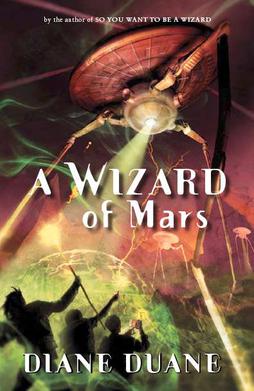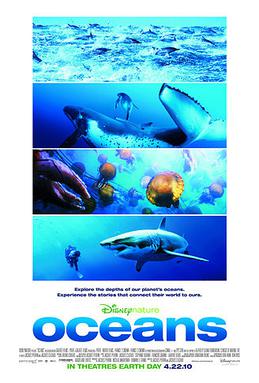Plot summary
Nita's family goes on vacation with Kit and his dog, Ponch, to the South Shore of Long Island. While swimming in the ocean at night, Nita encounters a dolphin (nicknamed 'Hotshot'), and Kit reports the local rocks' memory of disaster. In the following night, they are carried by the dolphin to a nearby beach, where they see a pack of sharks attacking a humpback whale wizard named S'reee, whom they rescue. Nita heals S'reee, and Nita and Kit return to shore. From S'reee, they hear of a 'Song of the Twelve', in which twelve cetacean wizards were tempted by the Lone Power to embrace entropy; and of the Twelve, three whales accepted this, three were undecided, and three rejected it. A Tenth whale, the Silent Lord, instead sacrificed herself, and was eaten by the Master Shark. This action bound the Lone Power for a time, and succeeding Songs (re-enacting the first) have kept it bound. Upon learning of an absence of wizards willing to join the Song, Nita volunteers herself as the Silent Lord, not knowing the implications; whereafter S'reee takes Nita and Kit to find other whales for the upcoming Song. Nita, having shared blood with S'reee while healing her, becomes a humpback whale without external aid, while Kit is given a 'whalesark' (a cloak containing the 'character' of a particular species) changing him into a sperm whale.
The next day, Nita and Kit sneak out of their beach house to help S'reee, and are introduced to Ed'Rashtekaresket (nicknamed 'Ed' by Nita): the 'Master-Shark' of the Song. From him, Nita learns that the Song requires her own death, and becomes reluctant to continue her role; but is persuaded on grounds that a failure of the Song will destroy millions of innocent lives, and that her own memories of Kit and their adventures will be excised. As the Lone Power's binding weakens, large kraken attack the wizards underwater, and volcanic vents become active. Nita and Kit, in the face of her parents' demands for an explanation, reveal wizardry to her parents, but do not explain Nita's role in the Song. Nita's sister Dairine becomes able to read Nita's book of magic, suggesting her own innate abilities thereof (explored in the sequel). On return to the ocean, Nita meets the other participants in the Song (called the 'Celebrants), and befriends Ed. Thereafter the Celebrants descend into Hudson Canyon, where they are attacked by kraken and other monsters until they reach the Sea's Tooth, where the Song is held. The Song continues according to plan, until one of the whales succumbs to the Lone Power, and allows the Krakens to attack the Singers. Kit then takes her place; but the Lone Power emerges from its binding as an enormous serpent. In the succeeding battle, Ed requests Nita to temporarily give him her wizardry, and he finishes her part of the Song. He then attacks the Serpent, who wounds him; prompting all the sharks in the area to attack him and the serpent, whereupon the Lone Power withdraws, bound anew.
Nita and Kit return to the beach house, where Nita learns that Ed's sacrifice pays a debt owed by herself to the godlike 'Powers' governing wizardry. A rough epilogue then forms in which Ed appears in 'Timeheart', the Heavenly realm preserving affectionate memories, to Nita and Kit.

Cetacea is an infraorder of aquatic mammals belonging to the order Artiodactyla that includes whales, dolphins and porpoises. Key characteristics are their fully aquatic lifestyle, streamlined body shape, often large size and exclusively carnivorous diet. They propel themselves through the water with powerful up-and-down movement of their tail which ends in a paddle-like fluke, using their flipper-shaped forelimbs to maneuver.

The humpback whale is a species of baleen whale. It is a rorqual and is the only species in the genus Megaptera. Adults range in length from 14–17 m (46–56 ft) and weigh up to 40 metric tons. The humpback has a distinctive body shape, with long pectoral fins and tubercles on its head. It is known for breaching and other distinctive surface behaviors, making it popular with whale watchers. Males produce a complex song typically lasting 4 to 33 minutes.

Whales use a variety of sounds for communication and sensation. The mechanisms used to produce sound vary from one family of cetaceans to another. Marine mammals, including whales, dolphins, and porpoises, are much more dependent on sound than land mammals due to the limited effectiveness of other senses in water. Sight is less effective for marine mammals because of the way particulates in the ocean scatter light. Smell is also limited, as molecules diffuse more slowly in water than in air, which makes smelling less effective. However, the speed of sound is roughly four times greater in water than in the atmosphere at sea level. As sea mammals are so dependent on hearing to communicate and feed, environmentalists and cetologists are concerned that they are being harmed by the increased ambient noise in the world's oceans caused by ships, sonar and marine seismic surveys.

Cetacean surfacing behaviour is a grouping of movement types that cetaceans make at the water's surface in addition to breathing. Cetaceans have developed and use surface behaviours for many functions such as display, feeding and communication. All regularly observed members of the order Cetacea, including whales, dolphins and porpoises, show a range of surfacing behaviours.

Escape from Atlantis is a board game that portrays the sinking of Atlantis and the attempts by the population to escape the sinking island. It was originally released in the United States under the title of Survive! and first published in the English language by Parker Brothers in 1982. The game was invented by Julian Courtland-Smith. Early copies of Escape from Atlantis include the name of the then co-copyright owner, C. Courtland-Smith.

Young Wizards is a series of novels by Diane Duane.
Louis Herman was an American marine biologist. He was a researcher of dolphin sensory abilities, dolphin cognition, and humpback whales. He was professor in the Department of Psychology and a cooperating faculty member of the Department of Oceanography at the University of Hawaiʻi at Mānoa. He founded the Kewalo Basin Marine Mammal Laboratory (KBMML) in Honolulu, Hawaii in 1970 to study bottlenose dolphin perception, cognition, and communication. In 1975, he pioneered the scientific study of the annual winter migration of humpback whales into Hawaiian waters. Together with Adam Pack, he founded The Dolphin Institute in 1993, a non-profit corporation dedicated to dolphins and whales through education, research, and conservation.

So You Want to Be a Wizard by Diane Duane is the first book in her long-running Young Wizards series of novels which currently consists of eleven books by Duane. It was written in 1982 and published the next year. In 2012 a revised "New Millennium Edition" was released as an eBook.

High Wizardry is the third novel of the Young Wizards series by Diane Duane. It was published in 1990.

The Wizard's Dilemma is the fifth book in the Young Wizards series by Diane Duane. It is the sequel to A Wizard Abroad.

A Wizard Alone is the sixth book in the Young Wizards series by Diane Duane. It is the sequel to The Wizard's Dilemma.

Wizard's Holiday is the seventh book in the Young Wizards series by Diane Duane. It is the sequel to A Wizard Alone.

Humphrey the Whale is a humpback whale that twice deviated from his Mexico to Alaska migration by entering San Francisco Bay. This behavior is unusual for a humpback whale, and Humphrey attracted wide media attention when entering the bay in both 1985 and 1990. Both of his bay incursions resulted in rescue by the Marine Mammal Center, based in Marin County, California, assisted by the United States Coast Guard and hundreds of other volunteers.

Stellwagen Bank National Marine Sanctuary is an 842-square-mile (638-square-nautical-mile) federally protected marine sanctuary located at the mouth of Massachusetts Bay, between Cape Cod and Cape Ann. It is known as an excellent whale watching site, and is home to many other species of marine life.

Wizards at War is the eighth book in the Young Wizards series by Diane Duane. In this book, for the first time in a millennia, the wizards would have to go to war...
The Ingo tetralogy is a series of four children's novels, set in Cornwall, by British author Helen Dunmore. The four books are, in chronological order, Ingo, The Tide Knot, The Deep and The Crossing of Ingo. The first book was nominated for the 2008 Booktrust Teenage Prize.

A Wizard of Mars is the ninth novel in the Young Wizards series, written by Diane Duane. After being pushed back several times due to internal turmoil at Harcourt Trade Publishers, it was scheduled for release on April 14, 2010, but the distributor shipped it in late March of 2010.

A bait ball, or baitball, occurs when small fish swarm in a tightly packed spherical formation about a common centre. It is a last-ditch defensive measure adopted by small schooling fish when they are threatened by predators. Small schooling fish are eaten by many types of predators, and for this reason they are called bait fish or forage fish.
The Undersea Adventures of Captain Nemo is a Canadian animated television series of five-minute cartoons produced in 1975 by Rainbow Animation in Toronto, Ontario. The series follows the underwater adventures of Captain Mark Nemo and his two young assistants, Christine and Robbie, in their nuclear-powered submarine, the Nautilus.

Oceans is a 2009 French nature documentary film directed, produced, co-written, and narrated by Jacques Perrin, with Jacques Cluzaud as co-director. The film, produced in association with the Census of Marine Life, explores the marine species of Earth's five oceans and reflects on the negative aspects of human activity on the environment, with Perrin providing narration.















